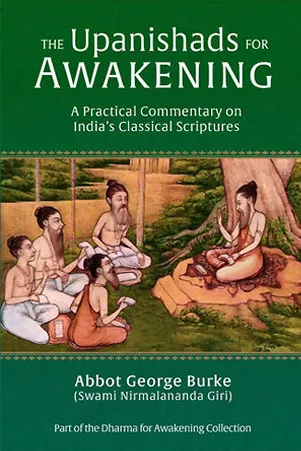
“Lead me from death to immortality” is part of a prayer at the beginning of the Brihadaranyaka Upanishad. In this final part of the Katha Upanishad we are given practical understanding of the way in which immortality is gained.
“The mortal in whose heart desire is dead becomes immortal. The mortal in whose heart the knots of ignorance are untied becomes immortal. These are the highest truths taught in the scriptures” (Katha Upanishad 2:3:14, 15)
When desire dies, when ignorance drops away, immortality is revealed. Practically speaking, we become immortal, but in reality we have always been immortal. Yet, like a millionaire who thinks he is a pauper, our immortality is of little meaning to us until we come to realize and experience it.
Furthermore, the upanishad tells us that in essence this truth is the only spiritual teaching there is–not just “the highest truths” as Prabhavananda renders it. Shankara says that this is the only teaching in all the upanishads, however varying the approaches may be. The aspirant must not lose himself in philosophical byways, including those set forth in mountains of books on Yoga and Vedanta. He must keep his vision clear and focused by understanding that liberation is the only point the upanishads ever make.
Attaining immortality
It is easy to tell ourselves to rid ourselves of desire and ignorance, but how is that to be done, especially since we have been in the grip of these two ogres for creation cycles? The upanishad gives us the yogic key to rising above desire and ignorance into immortality:
“Radiating from the lotus of the heart there are a hundred and one nerves. One of these ascends toward the thousand-petaled lotus in the brain. If, when a man comes to die, his vital force passes upward and out through this nerve, he attains immortality; but if his vital force passes out through another nerve, he goes to one or another plane of mortal existence and remains subject to birth and death” (Katha Upanishad 2:3:16)
It is noteworthy that this comes at the very end of the upanishad. Yogananda used to say: “Yoga is the beginning of the end.” So it is appropriate that after all the philosophical exposition the yoga teaching should be given.
By “heart” is meant the hub–located in the midst of the upper trunk of the body–of subtle passages known as nadis (here translated “nerves”) through which the life force (prana) circulates throughout the gross and subtle bodies, just as the blood circulates from the heart through the veins of the physical body. One hundred of these nadis direct the life force to the life processes of the bodies and are the forces of embodiment. One unique nadi, however, rises directly upward from the heart-hub into the head. (This nadi rises from the heart directly into the head–it is not the passage in the midst of the spine.) If at the time of death the departing spirit leaves through that channel, he gains immortality. But if his consciousness attaches itself to any of the hundred other nadis he will be impelled into the subtle worlds that lead inexorably back to incarnation in relativity.
In every meditation we activate this channel, causing the life force to spontaneously and effortlessly, flow upward into the thousand-petalled lotus in the head toward the divine radiance that shines above and upon the upper levels of the brain-lotus. Then at the end of life, having prepared himself by this practice, sitting in meditation the yogi ascends upward from the body into the realm of immortality.
The Supreme Person
Who is liberated in this manner? In conclusion to his teaching, Yama tells Nachiketa: “The Supreme Person, of the size of a thumb, the innermost Self, dwells forever in the heart of all beings. As one draws the pith from a reed, so must the aspirant after truth, with great perseverance, separate the Self from the body. Know the Self to be pure and immortal–yea, pure and immortal!” (Katha Upanishad 2:3:17)
If the Self is seen, immaterial as it is, it will appear as an oval light, in the shape of a human thumb. (The shape is also that of a Shiva Linga, which is a symbol of the Self.) Those who have seen this are unanimous in describing it in the manner of the upanishad. In my early teens I met a Christian minister who described the death of his twin brother. He said that at the moment of death his brother’s mouth opened, and as he exhaled for the final time, a white light shaped like a thumb emerged from his mouth and passed from the room.
It is through meditation, as I have described it, that we daily work on the separation of the Self from the body which will finally occur at the time of death. Not that we leave our body in meditation, but we begin conditioning all our bodies so they will not hold on to us at the final moments. As the fully ripened kernel of a nut pulls away from the shell so that when it is cracked the kernel comes out in full separation, so will it be with our Self in relation to the body. Sri Ramakrishna described it as being like the release of a fish back into the river.
May these final words of Yama echo within us: “Know the Self to be pure and immortal–yea, pure and immortal!”
Nachiketa–and us
Now the upanishadic sage gives us a final assurance:
“Nachiketa, having learned from the god this knowledge and the whole process of yoga, was freed from impurities and from death, and was united with Brahman. Thus will it be with another also if he know the innermost Self” (Katha Upanishad 2:3:18).
Read the next article in the Upanishads for Awakening: The Right Beginning







